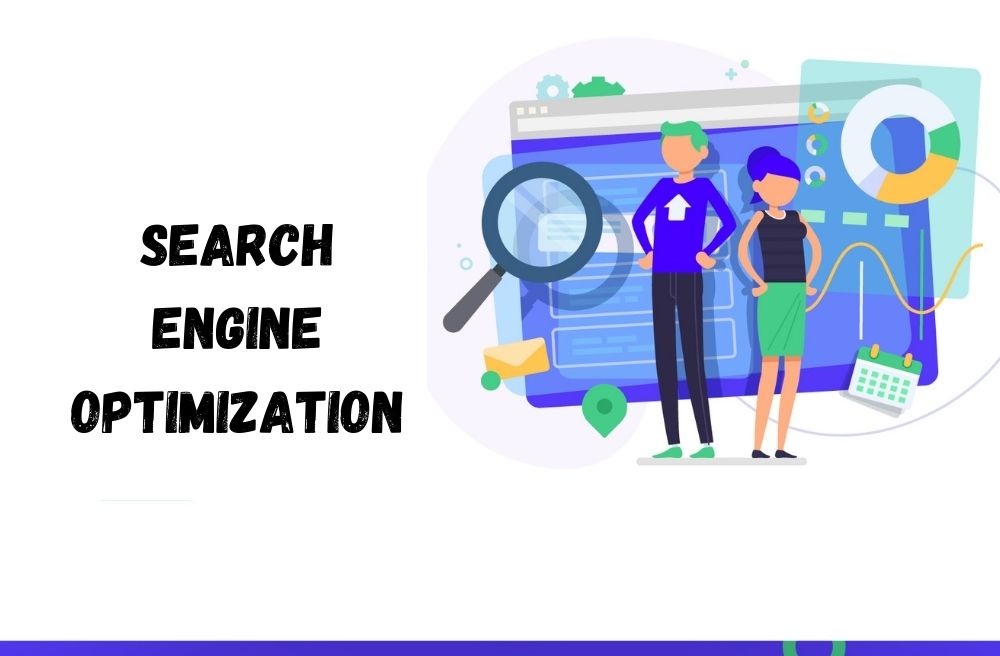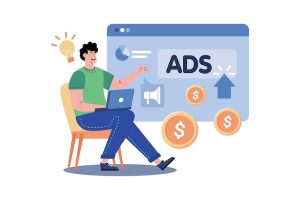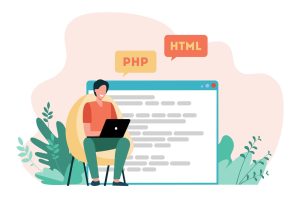The majority of SEO strategies incorporate the creation and optimization of multiple web pages within a website. Is it possible to run a successful SEO campaign with only a one-page website, even though most SEO strategies involve launching several pages on a website?
In this article, we will explore the concept of single page websites, evaluate their impact on SEO, and provide valuable SEO tips specifically tailored for single page websites.
What is a Single-Page Website?
A single-page website consolidates all of its content onto a single landing page, eliminating the need for separate URLs and internal linking to access different sections of the site. A single-page website, as the name suggests, refers to a website that consists of a single page where all the content is presented. It’s important not to confuse it with a single-page application (SPA).
A single-page application (SPA) differs from a single-page website in how it loads content. In an SPA, all the necessary files are loaded when the user initially visits the website, and additional content is loaded dynamically as the user interacts with the site.
Within a single-page application (SPA), the user can navigate to different pages, although technically the content is rendered “client-side” using JavaScript to dynamically serve the new content.
Are Single Page Websites Good for SEO?
In most cases, it is recommended to launch a website with multiple pages as single page websites can limit your potential to increase organic traffic.
Here are the main reasons why single page websites may not be beneficial for SEO:
1. Lack of Content Compromises Keyword Targeting
One major drawback of a single-page website is the limited keyword targeting potential.
Although it is possible to target various keywords using a single landing page, from an SEO perspective, it is generally more effective to separate keyword targeting across dedicated pages.
This process is commonly known as “keyword mapping,” where keywords are assigned to specific landing pages based on the perceived search intent identified by Google.
The most effective way to determine the search intent behind a keyword is to manually search the terms and analyze the results provided by Google.
If Google places single page websites at the top of the search results for your specific query, it’s likely that you can achieve top rankings using a single page as well.
Based on my observations, Google tends to prioritize ranking content that is highly relevant to the search term based on my personal experience.
When attempting to target keywords with different focuses using separate passages of content on a single page, you run the risk of unintentionally diminishing the overall relevance of that page.
A more optimal content strategy would involve splitting this content into hyper-focused landing pages.
Expanding your content extensively with relevant information related to your niche not only helps establish authority but also enhances the topical relevance of your industry in Google’s perspective.
Suppose, for instance, you are in search of buying contact lenses. Store A offers a dedicated landing page featuring a single product for purchasing the lenses.
On the contrary, Store B provides not only the product page but also a “contact us” page, along with several informative blog posts that address common queries related to contact lens eye care.
Certainly, various factors come into play in this scenario. However, as a potential customer, you would typically find Store B more trustworthy. Likewise, from Google’s perspective, a broader range of reliable content serves as an indication of expertise, establishing topical relevance and a stronger association with your niche.
2. Lack of Structure Leads to Poor User Experience
Clear structure is often lacking in single page websites. When all content is consolidated into a single page, users frequently encounter a confusing and frustrating experience. This occurs because the sole method for users to navigate a single-page site is by scrolling the page and potentially clicking on anchor links if they are provided.
As more content is crammed onto a single page, the user’s experience becomes increasingly frustrating, requiring greater effort to locate the desired content.
Multi-page websites commonly feature a well-defined content hierarchy facilitated by a header navigation menu and breadcrumbs.
Users are familiar with navigating these setups. When properly configured, these elements also ensure a seamless experience for users to easily navigate between pages at their convenience.
In order to improve user navigation on a single-page website, content is frequently truncated. Nonetheless, this approach does present certain drawbacks.
By streamlining your content, there is a possibility that you might overlook the information that your users are seeking and unintentionally remove content that holds SEO value.
3. Limited Potential to Acquire Backlinks
Single page websites commonly prioritize transactions and focus on driving conversions. Single page websites typically contain minimal informational content, such as blog posts, studies, or campaign-style pages. In my inaugural Ahrefs blog post titled “Here’s Why You Should Prioritize Internal Linking,” I discussed how webmasters usually prioritize linking to informational content rather than transactional content.
Therefore, opting for a single-page website is likely to hinder your ability to establish quality backlinks.
Link building is one of the three fundamental pillars of SEO. By implementing a website structure that is suboptimal for generating links, you will restrict your potential for ranking success.
Having a multi-page website provides greater flexibility to publish a wider range of content that naturally attracts backlinks.
What are the SEO Benefits of Running a Single-Page Website?
At this point, you might be curious as to why someone would choose to operate a single-page website. Despite the numerous reasons I’ve presented against it, a single-page website might actually be the perfect choice for your current needs and circumstances.
Numerous webmasters may choose to initially operate a single-page website with the intention of expanding and scaling up their website in the long run.
In this particular case, a single-page website serves as a convenient placeholder or Minimum Viable Product (MVP) version of a website.
Additionally, single page websites are relatively inexpensive and straightforward to set up. You only require resources to design, create, and host a single page instead of multiple pages.
These are a few evident non-SEO factors that make single page websites a suitable choice. However, there are also some SEO advantages associated with them.
1. They provide a great starting point for brand launches
While preparing to launch a new brand, it is highly probable that you are working tirelessly behind the scenes to ensure your comprehensive website is ready for its grand unveiling. Prior to the official launch of a brand, a single-page website often serves as an ideal temporary placeholder site until the full website is ready to be unveiled.
By having the single-page website in place, you can ensure that Google has crawled and indexed your website at least to some extent before the brand’s official launch.
This helps to prevent the scenario where your brand and website are launched without being indexed on Google.
Such a situation could be catastrophic, as your website may miss out on valuable clicks on the significant day of your brand’s launch.
With the presence of a single-page website, you can ensure that search engines index your website and make progress in establishing important rankings for key branded terms even before your official launch.
2. PageRank is focused on a single page
As mentioned earlier, it is generally more challenging to acquire backlinks for a single-page website. Indeed, this is true. However, one advantage of having a single-page website is that it reduces the risk of PageRank dilution.
All backlinks directed towards your site will be directed to a single URL, eliminating the potential for dispersion of PageRank. Consequently, all the PageRank accumulated for your site is concentrated on a single page, without being diluted as authority is transferred through internal links.
When PageRank is transmitted through internal links on multi-page websites, a fraction of the total value of that backlink is gradually diminished and passed on.
This phenomenon is commonly referred to as the “PageRank Damping Factor,” which signifies the gradual reduction in value passed on with each subsequent “hop” through internal links.
For instance, consider Store A and Store B, both selling the same product, where Store A is a single-page website and Store B is a multi-page website.
Both Store A and Store B receive a backlink with an identical PageRank value, directed towards the root domain of each website. Given that Store A’s product is situated on the homepage (root domain) as a single-page website, it acquires the utmost value from the backlink.
However, Store B needs to employ an internal link in order to transfer the PageRank from its homepage to the designated product page.
Due to the diminishing value with each internal link “hop,” Store B’s product page does not experience the same level of PageRank enhancement as Store A’s.
Due to the diminishing value with each internal link “hop,” Store B’s product page does not experience the same level of PageRank enhancement as Store A’s.
3. They naturally offer a good experience to mobile users
One advantage of single page websites is their inherent optimization for mobile users. Indeed, they are frequently constructed with a focus on catering to mobile users. Mobile users often find navigating through anchor links appealing, and the concise and dynamic nature of the content aligns well with the best practices for mobile optimization.
Nowadays, ensuring a positive user experience on mobile devices has become more crucial than ever before. Statista reports that the majority of global website visits are generated by users on mobile devices.
Google primarily crawls the mobile version of your website and considers mobile-friendliness as a significant factor in its ranking algorithm. Optimizing for mobile has never been more crucial.
Tips for Optimizing a Single-Page Website
Now that we have discussed the SEO-related advantages and disadvantages of operating a single-page website.
If a single-page website is currently the appropriate choice for you, here are my key SEO tips to help you create and manage it successfully.
a. Use a clear hierarchy
As mentioned earlier, single page websites frequently lack a well-defined architecture typically provided by navigation menus and breadcrumbs. Considering this, it is essential to establish a distinct on-page hierarchy for your content.
A recommended starting point is to employ a logical heading structure, which involves utilizing a single H1 for the main heading and H2s and H3s for the subheadings.
Arranging these heading tags in a logical sequence to divide your content helps users in scanning and navigating the page more effortlessly.
A disorganized heading structure necessitates users to comprehend the page structure while navigating, causing potential confusion.
This is especially crucial for visually impaired users who rely on screen readers, so it is important to avoid skipping heading levels, such as directly nesting an H4 under an H2.
b. Don’t overlook image optimization
Image optimization is frequently neglected in terms of SEO, and considering that single page websites often contain numerous images, it is crucial not to overlook image SEO. When it comes to single page websites, there are no additional rules to follow. However, it is essential to adhere to best practices, such as:
- Using descriptive alt text and file names.
- Compressing image file sizes and using next-gen file types.
- Loading images via a CDN (content delivery network).
By adhering to these best practices, you will not only improve your chances of ranking well in image search but also enhance the overall speed performance of the page.
c. Don’t neglect page speed
This brings me to the next tip: prioritize page speed. Since it’s the sole page that your users will load, ensure it is fast and responsive. While it’s true that page speed isn’t at the forefront of the list of hundreds of ranking signals in terms of SEO priorities, it should not be disregarded.
Nevertheless, it is difficult to overlook the fact that having a fast and responsive website not only contributes to organic rankings but also enhances the overall user experience. During a discussion on Reddit, John Mueller described Core Web Vitals as being more than just a tie-breaker signal.
According to Think with Google, if a mobile site takes longer than three seconds to load, approximately 53% of visits are abandoned.
By combining these points, it becomes evident that there is a strong case for prioritizing page speed as an important factor to consider.
When it comes to single page websites, incorporating lazy-loading for below-the-fold content should be given significant consideration. This is due to the likelihood of incorporating a higher volume of content than usual into a single page, which can increase the page load times.
Consequently, any resources that necessitate scrolling to be viewed will experience delays during the initial page load.
Instead, these resources will load dynamically as the user scrolls through the page.
d. Double down on link building
As previously mentioned in the article, single page websites encounter difficulties in naturally acquiring backlinks. Considering this, you will probably need to allocate even more time and effort to link building than you would with traditional multi-page websites.
You will need to focus on strategies that do not rely on creating new pages, doubling down on alternative approaches for link building.
This limitation arises from the inability to deploy dedicated pages specifically designed to attract links, thus restricting the use of strategies like link baiting. Offering expert comments or quotes for third-party websites is an excellent approach to building links without the necessity of creating new pages.
The method is pretty easy:
- A journalist reaches out with a request for an expert comment.
- You propose providing a comment in response to the journalist’s request.
- If your pitch is successful, the journalist will incorporate your comment into their article.
There is no assurance that the journalist will include a backlink along with the comment provided. However, there is a high likelihood that the journalist will include a link to give credit to the contributor. As you begin to accumulate expert comments, the corresponding backlinks will gradually increase as well. Twitter serves as an excellent starting point for discovering journalist requests seeking expert comments.
Journalists frequently incorporate the hashtag #journorequest, simplifying the process of locating relevant requests through custom searches.
Additionally, there are numerous third-party platforms, like HARO (Help a Reporter Out), which journalists utilize to submit such requests.
Identifying unlinked brand mentions is another effective strategy for building backlinks without the need to generate new content.
An unlinked brand mention is when your brand name or a key spokesperson from your company is mentioned online without a corresponding backlink provided by the publisher.
In general, the process is relatively simple:
- Locate the brand citations through Ahrefs’ Content Explorer.
- Perform a custom search to crawl the mentions and filter out pages that already include a link.
- Engage in outreach to the publishers who have not included a link, requesting them to add a link to the mentioned content.
Joshua Hardwick from Ahrefs has created an extensive guide on converting unlinked brand mentions into backlinks, offering valuable insights and strategies. It is highly recommended to read the guide for more comprehensive details on the aforementioned steps.
e. Follow on-page best practices
My final tip may be simple, but it is undeniably one of the most crucial ones: adhere to on-page SEO best practices. Due to the constraints of having only a single page, you will have to forego certain practices like internal linking.
However, it is still crucial to optimize key on-page elements, including meta titles, descriptions, and targeted keywords.
Final Thoughts
Single page websites may not be suitable for everyone. In most cases, personally, I would opt for a multi-page setup instead. However, there are certain situations where a single-page website is practical, especially as a short-term solution or minimum viable product (MVP) version of a website.
Key takeaways:
- Keyword targeting is compromised due to the limited amount of content available on a single-page website.
- Single page websites encounter difficulties in establishing and demonstrating expertise due to their limited content and scope.
- To compensate for the natural scarcity of backlinks, you will need to intensify your efforts in link building when operating a single-page website.








